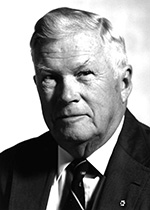The Charles G. Drake Clinical Fellowship in Neurovascular Therapy
The Charles Drake Clinical Fellowship in Neurovascular Therapy was launched in 2001 by Dr. Stephen Lownie, a former student turned colleague of Dr. Drake. Since then, “Drake fellows” have come to Western to learn new skills and then returned home or moved on to other areas to share what they learned in London.
The fellowship is open to neurosurgeons, neuro-radiologists, and neurologists, attracting applicants from around the world. Fellows study at both Western and London Health Sciences Centre locations learning new neurosurgical and endovascular skills over the course of two years.
Neurosurgeon Dr. Mel Boulton, in partnership with neuro-radiologists Dr. Manas Sharma and Dr. Sachin Pandey provide leadership and oversight to the Drake Fellows. To date 12 Drake Fellows have been successfully trained.
Selection Criteria
Application review, interview requirement (face to face or virtual).
Application Deadlines
Applications are due in January. Interviews are offered in March - April. Final selection generally occurs April-May.
Application Process
To apply for this fellowship, interested applicants should send the following documents to the Fellowship Director:
- A current CV
- Copy of medical degree (with English translation if applicable)
- Copy of specialty certification (with English translation if applicable)
- Three letters of reference
- Proof of citizenship (copy of passport or birth certificate)
- A Personal Statement showcasing why you are pursuing neurovascular training; availability of job/faculty position; requirements for funding during the fellowship
*If you are a sponsored international fellow, your sponsor must submit your application on your behalf directly to the PGME Office.
For more information about applying to CNS Fellowships click here.
Testimonials From Former Fellows
"The two years of hard work and intensive practice in the fields of cerebrovascular surgery and neurointervention, has been critical in my current practice; changing my perspective from the medical and research point of views. I have faced the fact that there are resource limitations to develop this subspecialty but I won’t quit in pursuing my professional goals."
- Dr. Raul Falero
"I am now the director of one of two certified Comprehensive Stroke Centers in Virginia. My partner and I embolized an AVM today for surgery next week, so all the training is being put to good use!”
- Dr. Thomas Mattingly, Director of the Johnston-Willis Hospital Comprehensive Stroke Center
Former Drake Fellows
2001 - 2003: Dr. Max Kole - Henry Ford Health Sciences, Detroit
2003 - 2005: Dr. Rodney Allan - Royal Alfred Hospital, Sydney, Australia
2005 - 2007: Dr. Miguel Bussiere - Edmonton, Alberta
2008 - 2010: Dr. Graeme Marchuk - Thunder Bay, Ontario
2008 - 2010: Dr. Raul Falero - Asuncion, Paraguay
2010 - 2012: Dr. Erin Dyer - Sunnybrook Hospital, Toronto, Ontario
2010 - 2012: Dr. Brian Van Adel - Hamilton General Hospital / HSC, Hamilton Ontario
2011 - 2013: Dr. Thomas Mattingly - Richmond Neurosurgery Associates, Virginia
2012 - 2014: Dr. Pablo Lopez-Ojeda - Hopital Bellvitge, Barcelona, Spain
2014 - 2015: Dr. Peter Johnson - Kingston, Jamaica
2015 - 2017: Dr. Ghaya al-Rumaihi - Qatar
2017- : Dr. Khalid Bajunaid - Saudi Arabia
Message from Dr. Lownie and Dr. Pelz
"Dr. John Hunter, a surgeon in London England, is considered the father of experimental surgery. Dr. Hunter, who lived and worked in the 1700s, was one of Dr. Drake’s heroes. Some years back we opened a small neurovascular laboratory dedicated to learning and research on the 10th floor of University Hospital. In Dr. Drake’s and Dr. Hunter’s honour, we named the laboratory the “Drake-Hunterian.”
One of Dr. Hunter’s most renowned experiments had to do with the antlers on stags. He saw that the antlers of stags fall off and he wondered if they fell off because the carotid artery stopped the blood supply. He ligated one and it grew cold and stopped growing and he hypothesized that it would fall off sooner. A week later, to his surprise the antler was warm and had resumed growing. At autopsy he discovered that his ligature had not slipped, but small arteries above and below had mysteriously enlarged.
From this single observation Dr. Hunter deduced the principle of collateral circulation. Under this principle, the smaller tributary arteries under the “stimulus of necessity” take the functions of the larger artery.
It has been our pleasure to work with all of the Drake fellows who have come to Western over the years. Among those coming with a neurosurgery background, we believe the fellowship has realized Dr. Drake’s vision that neurosurgeons have something to contribute to the intricacies of catheter work in brain blood vessels. The popularity of the Drake fellowship seems only to have increased over the years, which is most gratifying. Fellows have come from (and returned to) as far away places as: Cuba, Australia, Spain, the United States....and Thunder Bay!
We look forward to working with many more Drake fellows and continuing the work that helped make London and Dr. Charles Drake internationally known.”
- Dr. Stephen Lownie and Dr. David Pelz








